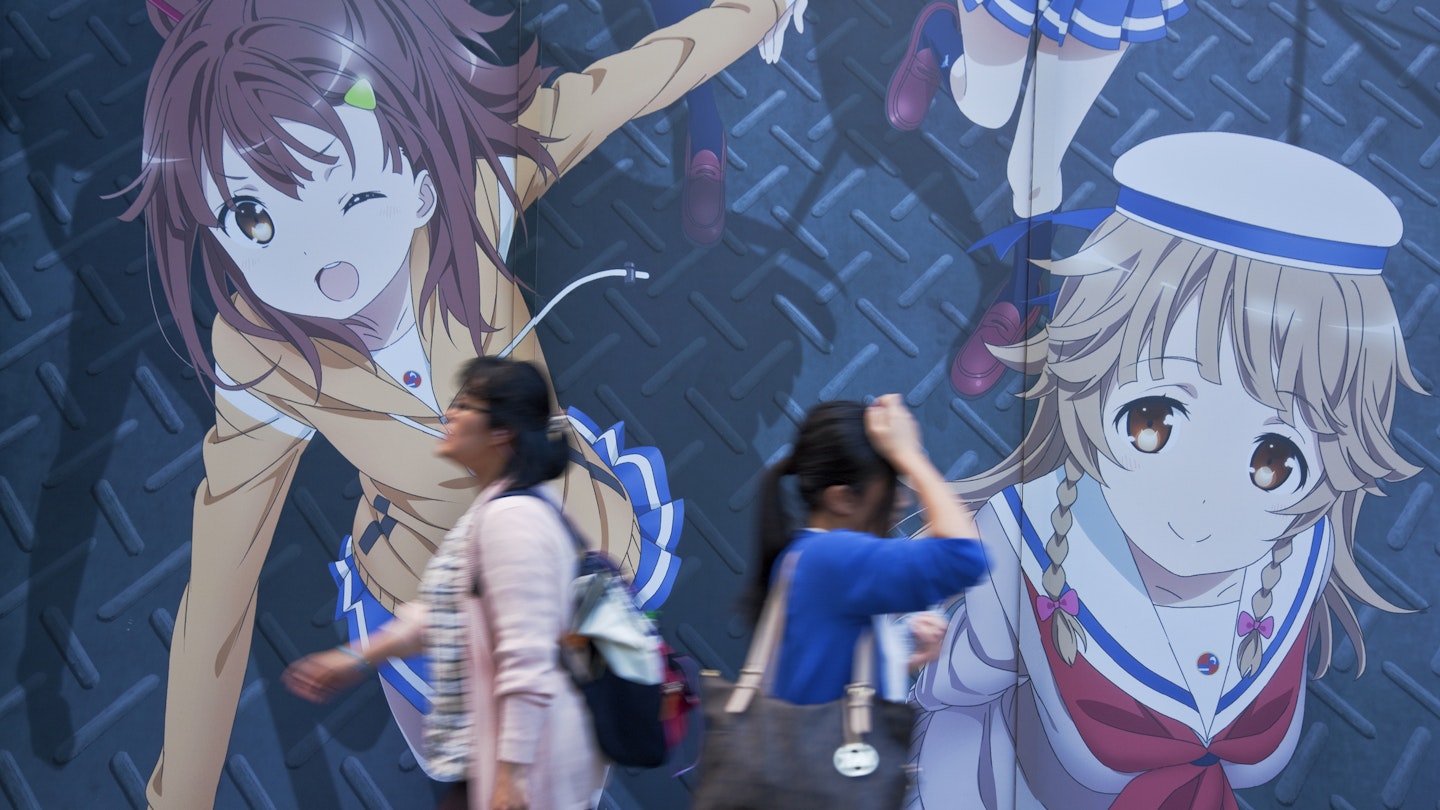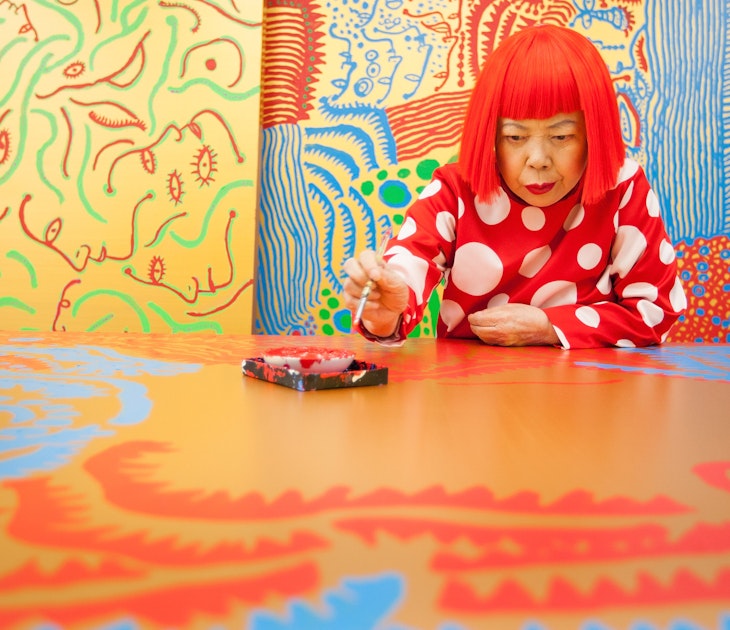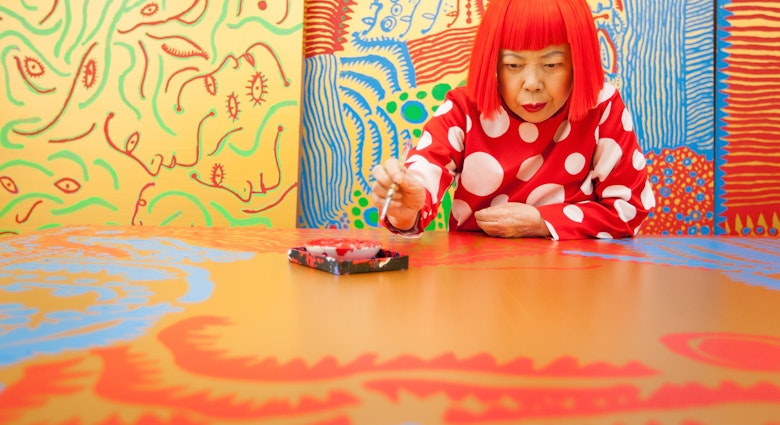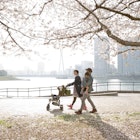Tokyo is known as a city of juxtapositions, but never is this more true than when you’re standing before an elaborate mural of colors, shapes and history that just so happens to be gracing the outer walls of the German Embassy.
In a hyper-developed metropolitan, there is art institutionalized and gatekept behind museum entrance fees, and there is art running free in the backstreets, made by independents and bolstered by a spirited community.
I love disappearing into the day, burying myself into a quieter part of town and finding a local bistro that commissioned its next-door neighbor to design the T-shirts they have for sale. My favorite meet-up is a monthly creative collective featuring everyone from pixel artists to bakers, live streamers to haikyo (abandoned buildings) photographers. It just so happens to be hosted within a bustling, urban co-working space.
The art scene in Tokyo is akin to the rapid heartbeat of this city, fleeting where no two encounters are ever the same. Mural art may come and go, just as that zine artist you saw today will be gone tomorrow. But there’s beauty in that impermanence and a certain serendipity that brings out the best in this city.
Things to know before you go
Many travelers come to Japan worried about the language barrier, but the international scene in Tokyo has made it almost easy to get by with English. When attending community events, it certainly helps to know a few basic Japanese phrases, especially in the introduction stages. However, many events will be English-Japanese bilingual, with participants all speaking both to some extent. Instead of a language test, you’ll have to pass a "vibe check," which should also be relatively simple. Be open, curious and friendly. If there’s an artist in attendance, look them up prior on social media so you have something to talk about with the people who came to see them. You’d be surprised to find out how much can be said with just body language and a large dose of enthusiasm.
For the most part, independent artists love for their work to be photographed and shared. Do keep an eye out for outlier instances where this is not the case. Usually, a "No photos" sign will be clearly visible next to the artwork. And if someone in charge hurries over with the universally spoken shaking of the head, it’s best to just apologize and comply.

Where to find Tokyo's independent art
A melting pot of art
The IRL-scene has been a much-needed reprieve from the work-from-home doldrums, and one specific monthly gathering has been particularly worth getting out of my pajamas for. Artedly is the ordinary person’s art curator, connecting independent photographers and digital artists with cafes and community spaces around Tokyo. However, its ace-in-the-hole is the curated monthly meetups that have somehow managed to attract only the very best people this city has to offer. One evening, we stood hyper-fixated at a pixel art piece of Van Gogh’s Starry Night by Codestar Creates. At another, I nabbed one of Breathing Tokyo’s stickers, a '90s Windows OS depiction of Hokusai’s The Great Wave off Kanagawa, all while munching on homemade banana bread by JoshinJapan. These gatherings are as much a celebration of art as they are of the community that keeps it going.
Go down the rabbit hole
I first came across Design Festa the old-fashion way, via a flyer taped to a telephone pole which repeated every 5m (16ft) or so to show me the way. If this was Alice chasing the proverbial white rabbit, then Design Festa, "an open space for everyone who expresses," is most certainly wonderland. Consisting of both an east and west block, the space houses a seemingly endless number of rooms, each compact and with a haphazard layout that adds to the charm. Artists are able to rent these spaces for short or long stints, as standalone work or as part of a collective exhibit with a theme. At the time of writing, the current work displayed was in the spirit of the Year of the Rabbit, with everything from rabbit portraits to rabbit-shaped barrel bags to mammal depictions done entirely in ballpoint pen.
Stop for street art
Shopping for groceries late one night, I took a slightly different way home and ran into a three-story whale on the cusp of surfacing from the ocean depths. It was mural art that graced one side of a wall that belonged to Kairyou-yu, a local sento (communal) bathhouse frequented by an elderly crowd. Tokyo streets aren’t brightly lit, and seeing it gleaming against the backlighting made its stature all the more intimidating.
I’ve had several more of these encounters where street art seems to find me, and even though they say it’s rude to stare, you just can’t help yourself. On the outer wall of Toho Gakuen lies the finished piece of Keeenue’s Inspiration artwork, fueled by ideas from students and faculty members of the institution. World-renowned pixel street artist Invader has made his mark in this city, and half the fun is in discovering his work on your own.
The highest concentration of street art can most likely be found in the Harajuku area and surrounds, where creativity peeps out at you amongst lolita clothing stores, pancake cafes and the brand-new Ikea. Venture down Takeshita Street and make sure to look up, down and around for the finer details.
The details
Wear comfortable walking shoes
For art walks, pack comfortable shoes that factor in the season of travel as well as potential wet-weather conditions. If you’re purchasing an umbrella, hold onto it tight, as leaving it outside a konbini (convenience store) makes it fair game for any other Tokyoite to pick it up.
Be sure to carry cash
Unlike many other major cities, Tokyo is still a cash-based society. In general, it’s well worth moving around the city with several 1000 yen notes in the case an overseas credit card doesn’t work. Expenses are likely to be low and limited to paying nominal fees to cover venue costs and incidentals like drinks on consumption and souvenirs.
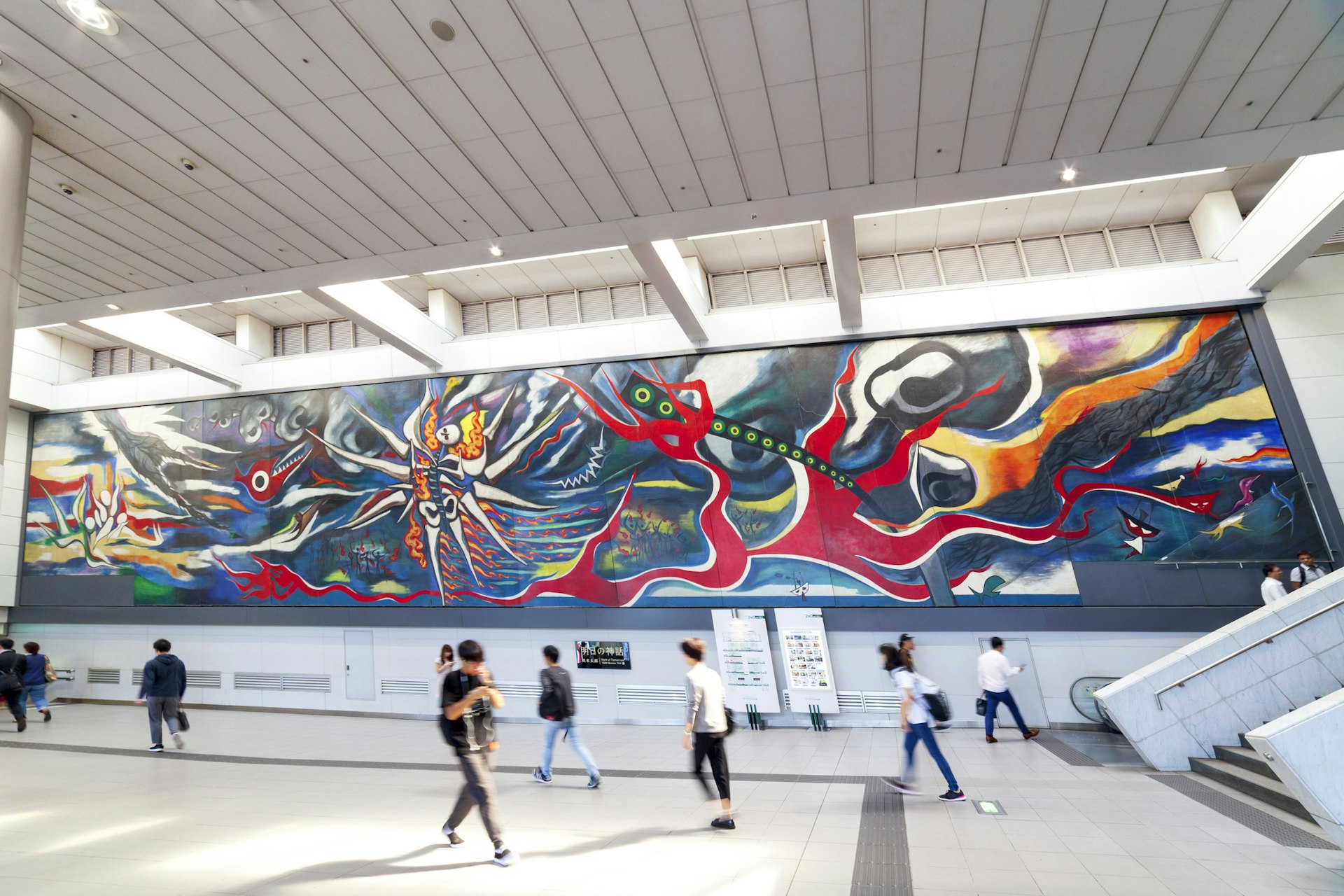
Keep it going
As the sun sets, grab your newfound posse and continue the search for inspiration and good vibes. Tokyo Love Hotels over at Sankeys Penthouse in Shibuya is an art-forward event that features DJs spinning alongside tarot card readers and Polaroid photographers. It’s part club, part art installation – and all fun. For a slower pace that’s no less inviting, the BnA Hotels in Nihonbashi, Koenji and Akihabara all boast an ever-changing mural backdrop that’s picture-perfect for a round or two of drinks. Once the last trains have gone just after midnight, you might as well stay out until morning.
Want some help? Let Elsewhere plan your next trip.
Take it home
Stay connected
Social media has made it easy to stay connected to the scene long after you’ve started your return journey home. All of the events and spaces have their corresponding Instagram accounts to check out. In addition to those, TokyoDex, an art consultancy, regularly shares bilingual content featuring independent Japanese artists they partner with. Author and zine artist, Hellosandwich’s feed is populated with beautifully serene slice-of-life Japan shots plus art haunts. Bookmark all of these for that future trip. Tokyo, after all, has a magnetic way of drawing travelers back again and again.
Takeaway art
Should a piece of art speak to you, chat with the artist themselves and see if there’s a way to purchase the original. Artedly has an online store that produces partnered artists’ prints locally in Japan before hand-numbering and delivering them to the world, ensuring no two pieces are the same. For other bits and pieces to bring back, Bumpodo, Japan’s oldest art supplies store, is home to Japan-made crafts and small goods like original postcards and miniature retro figurines. SOU SOU Kyoto’s Aoyama outpost is an homage to handmade and textile-forward pieces such as tabi shoes, socks and mini accessories that combine art with functionality.
How to prepare
While there’s no required reading, a pre-listen of the Almost Perfect Tokyo podcast can get you clued in on the scene before arrival. Primarily an artist residency, Almost Perfect interviews creatives at the start of their residency and once more at the end, sharing their process, findings and what they’ve achieved in that time. Each episode is spirited and motivating, capturing how a city like Tokyo has dynamically influenced their work.
